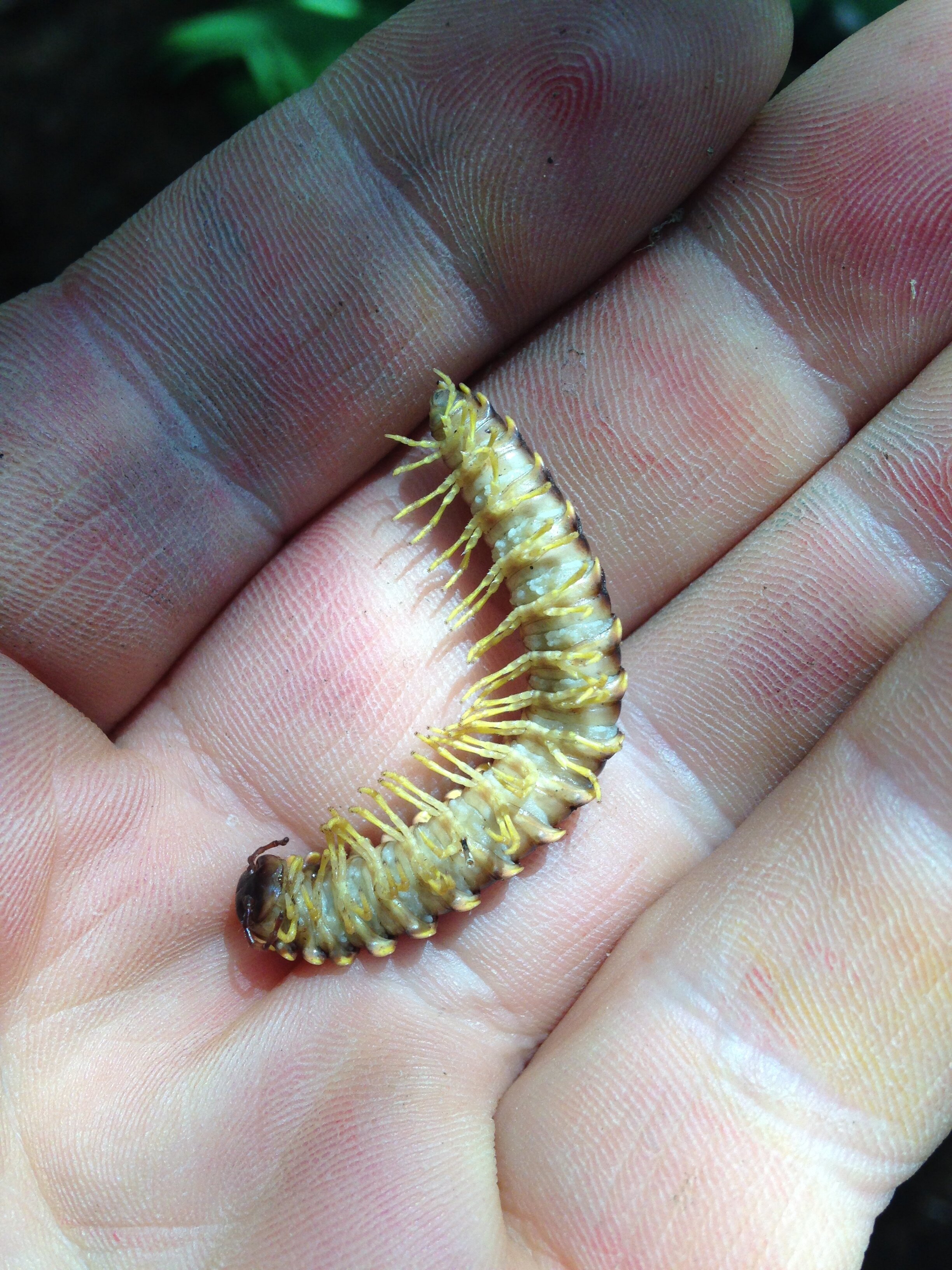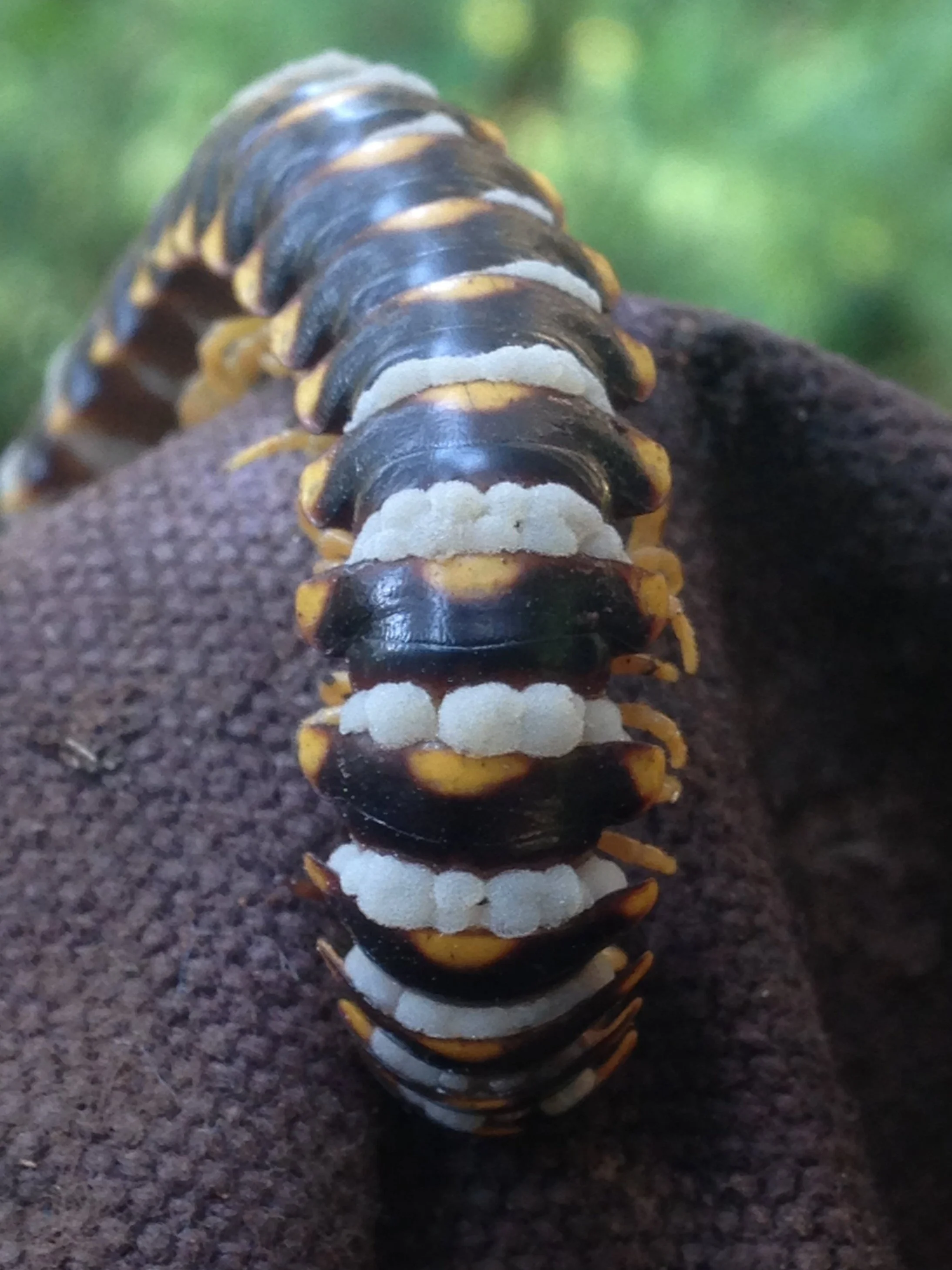Parasitic Zombie Fungus Infecting Cyanide Secreting Milipedes
Dorsal view of Rudiloria trimaculata, 03.07.2021
I went out with the tracking club on the weekend and while out we kept coming across these yellow and dark brown/black millipedes hanging out on the top of narrow stumps about a meter (~3 feet) off the ground.
I wanted to find a name so I could start trying to find more information from there. The millipede I keep encountering in my area is called the Flat-backed Millipede (Rudiloria trimaculata), in the Tribe Apheloriini and Xystodesmidae family, which hosts many similar millipedes. In Ontario and Quebec, we only have three known species of millipedes from the Xystodesmidae family (Xystodesmids); Pleuroloma flavipes, which supposedly has a different colour pattern and the back is textured differently; Apheloria virginiensis corrugata which isn’t spotted like the S. trimaculata, but instead more of a banded pattern across the posterior end of each segment. In my research I have read that the colours can be kind of variable to a slight degree (sometimes more red, sometimes more yellow), but the colour difference doesn’t change the species.
The millipedes are detrivores, meaning they like to eat dead rotting stuff like decaying leaves, stalks and the like.
These millipedes have a cool defence mechanism of secreting a compound containing cyanide. This is only released when the animal is under threat or perceives to be under threat. Some folks suggest it is utterly harmless, while others say to wash your hands after handling one of them. I remember that Almonds (Prunus dulcis) and Apple seeds (Malus domestica) also contain cyanide of negligible quantities and now am wondering who else can bio-engineer their own cyanide? How much cyanide does it take to deter a predator? Who are the main predators of S. trimaculata?
Ventral view of Rudiloria trimaculata, 03.07.2021
At tracking club, the discovery of Rudiloria trimaculata brought to mind a story that one of my coworkers was telling me about recently, where he was walking through the woods in Kitchener, Ontario, and came across many of these millipedes in elevated spots where they were found dead. Some of the dead millipedes also appeared to have a dusting of spores throughout.
This story along with the multiple dead millipedes we found at tracking club has led me to searching out possible parasitic fungi that might be infesting these arthropods, zombiefying them (controlling the arthropod bodies) and making the zombie bug climb to a high point where they eventually die and release a bunch of spores into the forest to find new potential zombies and begin the cycle anew! The beauty of nature.
The zombie fungus is called Arthrophaga myriapodina, and the genus name translates to something like “insect devourer”. This fungi has been documented to infest a millipede called Apheloria virginiensis and likely many others in the Polydesmida Order (all of the Flat-backed Millipedes).
Now I need to keep an eye out for more dead millipedes and see if I can see any signs of spores on or surrounding them. I will update this post with a photo if I come across one.
UPDATE: Here are the images I was looking for.
Rudiloria trimaculata likely infected by Arthrophaga myriapodina. 13.09.2021
Rudiloria trimaculata likely infected by Arthrophaga myriapodina. 13.09.2021




